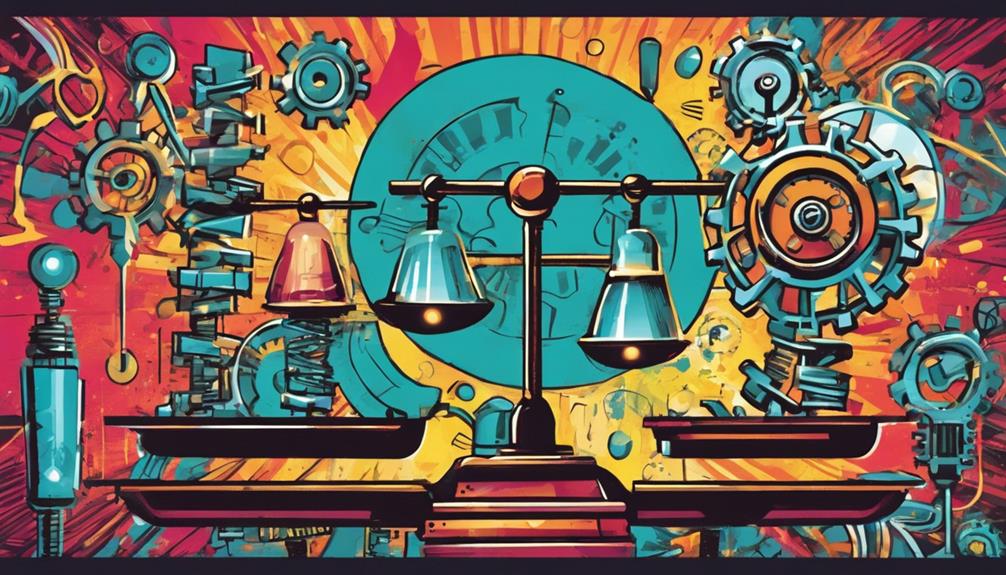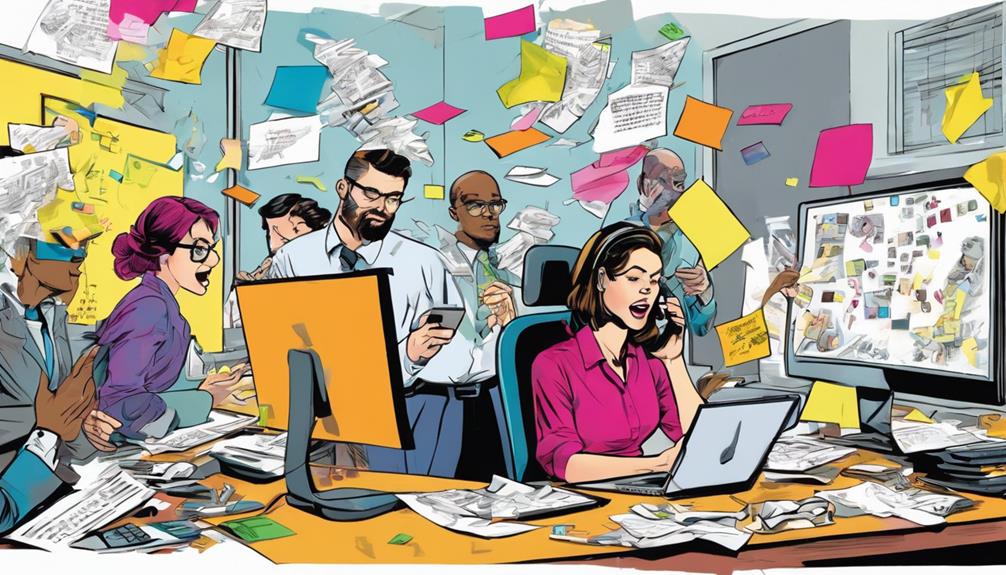Your business functions similar to software, requiring continual optimization and innovation to keep up with market demands. In order to remain competitive, it is essential to develop new offerings while also refining existing ones. Embrace a balanced approach that values operational excellence and creative experimentation. Foster a culture that embraces risk-taking and collaboration to inspire fresh ideas. Keep track of user engagement metrics such as A/B testing and community feedback to steer your strategies. By incorporating these practices, you can establish a resilient business that is prepared for change. Interested in learning more strategies that promote sustainable growth and adaptability? Check out this link: Unlock Your Entrepreneurial Spirit with Fresh Ideas.
Key Takeaways
- Just like software, businesses require continuous optimization to enhance efficiency and meet market demands effectively.
- Innovation in business, akin to software updates, is crucial for staying competitive and addressing evolving customer needs.
- Balancing optimization and innovation fosters sustainable growth and resilience in changing market landscapes.
- Implementing structured innovation processes, similar to software development cycles, can streamline idea generation and execution.
The Importance of Innovation
Innovation is essential for your business's success, as it drives growth and keeps you competitive in an ever-changing market. By implementing effective innovation strategies, you can create new products or services that differentiate your offerings from the competition. This competitive advantage can be the key to attracting and retaining customers.
However, innovation isn't just about new ideas; it's also about continuously improving your existing processes. This optimization and innovation process helps guarantee that your business remains agile and responsive to market demands. For instance, consider how Microsoft's stock price tripled under Satya Nadella's leadership, driven by a renewed focus on innovation.
Successful innovation often requires multiple iterations, so don't be discouraged if your initial attempts don't yield immediate results. Cultivating a culture that embraces risk-taking and learns from both successes and failures can encourage a more innovative environment.
Balancing Optimization and Innovation

When you're focusing on your business, it's essential to strike a balance between optimization and innovation.
While optimization can drive incremental growth, innovation is what fuels breakthrough success.
Understanding how to manage both effectively can set you up for long-term achievements.
Optimization Drives Incremental Growth
Balancing optimization with innovation is essential for driving incremental growth, enabling businesses to refine processes while exploring new opportunities. By focusing on optimization, you can achieve operational excellence, enhancing your current products and services. This continuous improvement leads to significant long-term results, as seen with companies like Facebook, which benefitted from sustained growth through small, deliberate enhancements.
For startups, prioritizing optimization is critical, especially in the early stages. It allows you to adapt to market demands and work towards product-market fit while fine-tuning your operational efficiency. As your organization grows, maintaining a balance between optimization and innovation becomes increasingly important. Companies with 30 or more employees can manage multiple product teams effectively, fostering a dynamic growth environment.
While innovation often leads to market disruption with new products and services, optimization enhances organizational performance by saving time and resources. This synergy creates a sustainable growth path, positioning your business to respond effectively to market opportunities.
Innovation Fuels Breakthrough Success
Embracing a balanced strategy that integrates both optimization and innovation can propel your business toward breakthrough success. Companies like Microsoft demonstrate this principle; their stock tripled under Satya Nadella thanks to continuous innovations in their products. If you focus solely on optimizing existing processes, you might miss out on transformative innovations that can reshape your market presence.
Take Facebook, for example. Their Growth Team optimized user engagement while also driving major product innovations, such as the News Feed, which considerably boosted user growth. This dual approach illustrates that sustained success comes from balancing these two elements.
Moreover, research shows that only 4% of product managers excel at customer development. This highlights the need for you to cultivate skills in customer engagement alongside data analysis, fostering a culture that encourages experimentation and risk-taking.
Skills Gap in Startups

You mightn't realize it, but identifying skills shortages in your startup is essential for success.
Many product managers excel in data analysis but struggle with customer engagement, which can stifle innovation.
To bridge this gap, consider investing in training that enhances understanding of market needs and fosters a culture of creativity.
Identifying Skills Shortages
Identifying skills shortages in startups reveals a vital gap, particularly in customer engagement, that limits innovation and growth.
A significant skills gap exists, with only 4% of product managers effectively conducting customer interviews. This shortfall restricts your ability to gather essential insights, ultimately stifling potential growth opportunities.
To address this issue, consider the following:
- Prioritize customer development training for product managers to enhance their engagement skills.
- Balance data analysis expertise with creative problem-solving techniques to foster innovation.
- Encourage collaborative environments where team members can contribute diverse perspectives.
Bridging the Gap
Addressing the skills gap is important for startups looking to enhance customer engagement and foster innovation.
Many startups struggle with effectively understanding their customers' needs due to a lack of proficiency in conducting customer interviews. A 2017 study revealed that only 4% of product managers in startups excelled in this area, highlighting a significant skills gap in customer development. This gap can hinder your ability to derive actionable insights from customer feedback, which is necessary for developing products that meet market needs.
Moreover, while data analysis and A/B testing are valuable, over-reliance on them can stifle creativity and limit your innovative potential. As your startup grows, balancing both optimization and innovation becomes essential for sustained growth.
Investing in customer engagement skills alongside data proficiency will help bridge this skills gap, enabling your team to navigate challenges more effectively.
Case Studies: Learning From Giants

Learning from the strategies of industry giants can reveal valuable insights that drive your own business growth and innovation. By analyzing how these companies tackle challenges and seize opportunities, you can develop a competitive edge in your market.
Embrace Innovation: Like Google's 20% time policy, dedicate resources to creative projects that can lead to groundbreaking new products.
Focus on Customer Needs: Amazon's customer obsession demonstrates that prioritizing user experience can fuel continuous innovation and growth.
Optimize Wisely: eBay's emphasis on take rates shows that excessive optimization can stifle potential innovations. Balance is key.
Leverage External Ideas: Collaborating with startups through open innovation programs can enhance your capabilities and drive fresh ideas.
Strategies for Sustainable Growth

To achieve sustainable growth, you need to strike a balance between optimizing your current operations and fostering innovative practices that keep your business adaptable in a changing market.
Start by continuously optimizing your workflows to enhance efficiency and productivity. This not only aligns your operations with market needs but also sets a strong foundation for growth.
Incorporate structured innovation management processes that include idea generation and prioritization. This helps maintain a pipeline of new projects aligned with your strategic goals.
Use market intelligence platforms to leverage data-driven decision-making, enabling you to identify disruptive technologies and capitalize on emerging trends effectively.
Collaboration is key; create a culture that encourages experimentation among your teams. By fostering collaboration, you can release substantial breakthroughs that support both optimization and innovation efforts.
Remember, companies with 30+ employees can manage multiple product teams more effectively, allowing for a balanced approach.
Ultimately, blending optimization and innovation will set you on the path toward sustainable growth, keeping your business resilient and responsive in an ever-evolving landscape.
Embrace these strategies, and watch your business thrive.
User Engagement and Metrics

User engagement hinges on understanding key metrics that reveal how well your strategies resonate with your audience. To truly optimize your business, you need to focus on growth metrics that drive user acquisition and retention.
Here are some vital elements to take into account:
- A/B Testing: This method helps you experiment with different strategies to see what boosts user engagement effectively.
- Monthly Active Users (MAUs): Tracking MAUs allows you to measure your growth and assess the impact of your optimization efforts.
- Community Feedback: Engaging with users helps identify their needs, driving innovation in your product development.
Creating an Innovative Culture

Building on your understanding of user engagement, cultivating an innovative culture within your organization can greatly enhance your business's adaptability and success. To foster this culture, consider implementing structured approaches that encourage creativity and collaboration.
| Strategy | Benefits | Tools Needed |
|---|---|---|
| Risk-Taking and Experimentation | Drives new ideas and solutions | Advanced analytics |
| Idea Management Systems | Streamlines innovation collection | Management software |
| Cross-Functional Teams | Combines diverse perspectives | Collaboration tools |
| Recognition and Rewards | Motivates continuous improvement | Performance tracking |
| Regular Communication | Enhances feedback and engagement | Communication platforms |
Conclusion
In today's fast-paced market, think of your business like software—always in need of optimization and innovation.
Embrace change and foster a culture that encourages new ideas. Take Apple, for example; their constant evolution keeps them ahead.
By balancing efficiency with creativity, you not only drive growth but also engage your users effectively.
Remember, a thriving business is one that adapts and innovates, ensuring it remains relevant in an ever-changing landscape.









